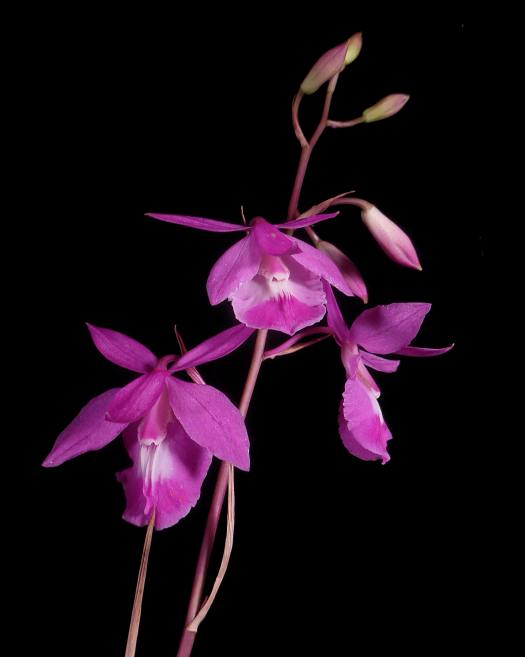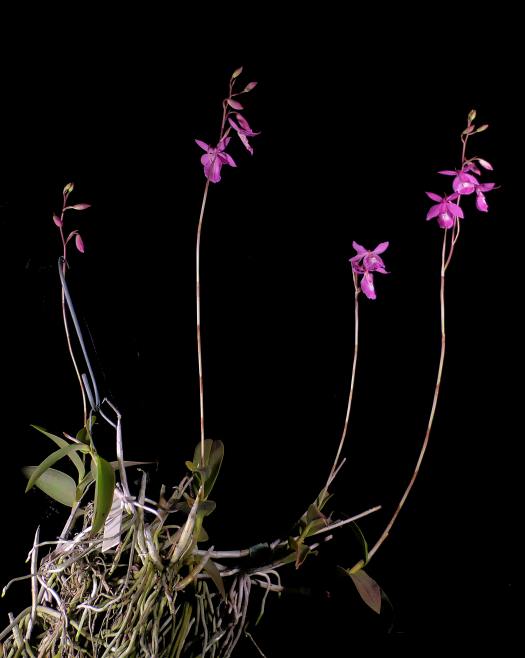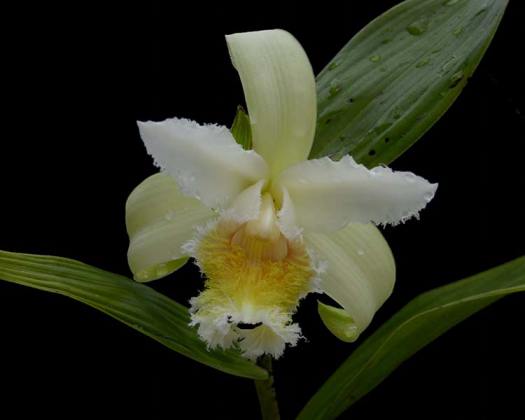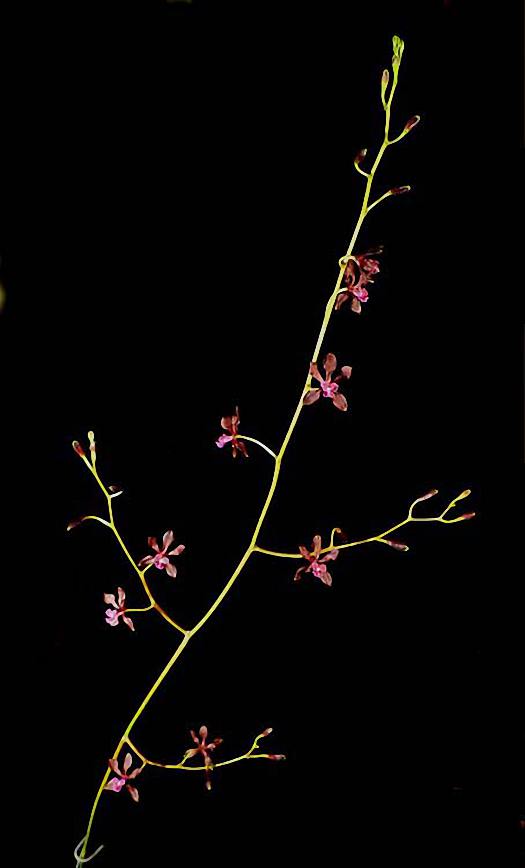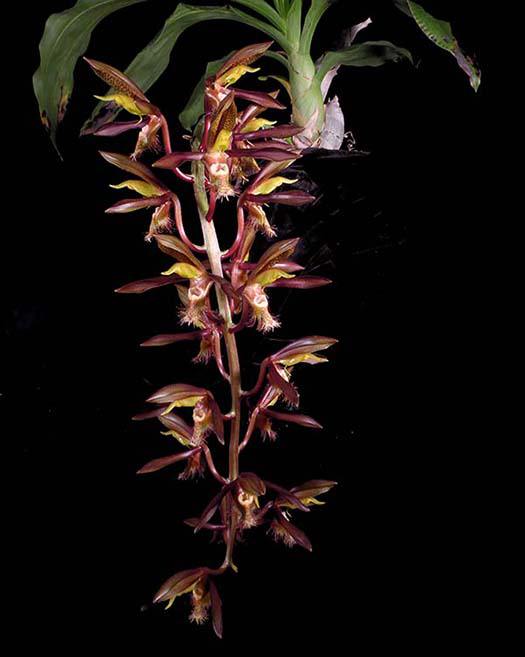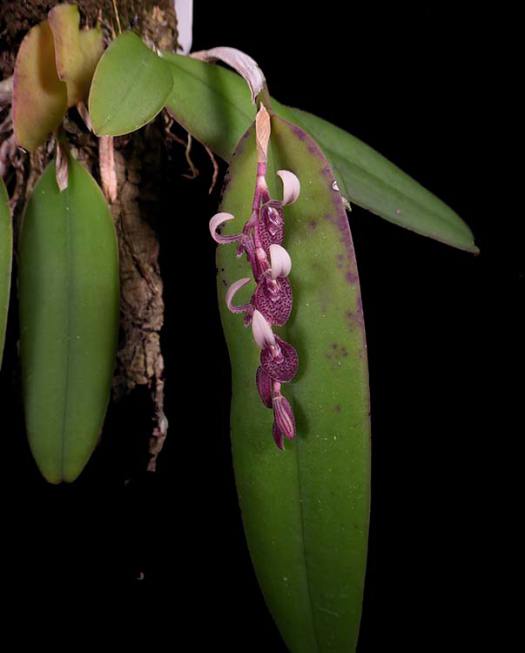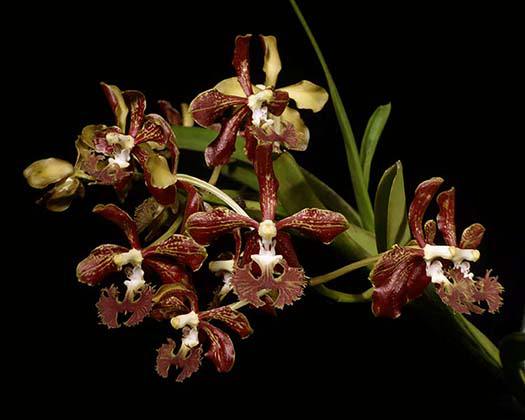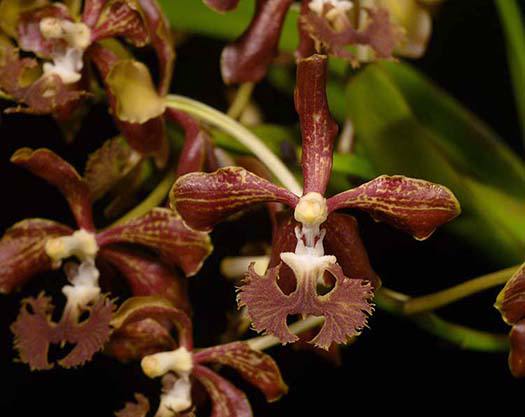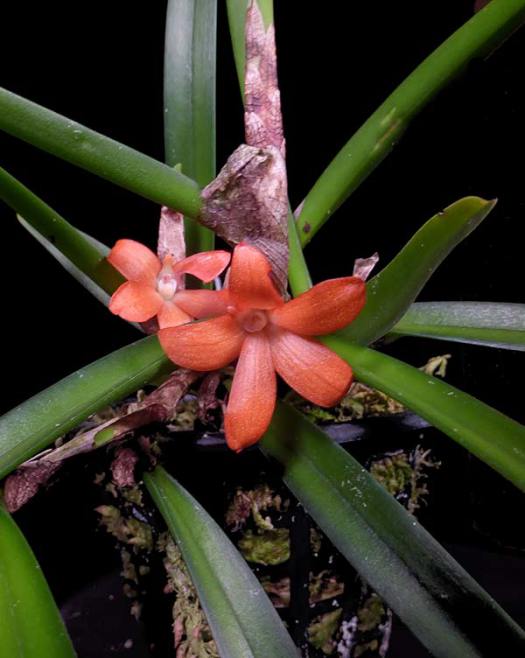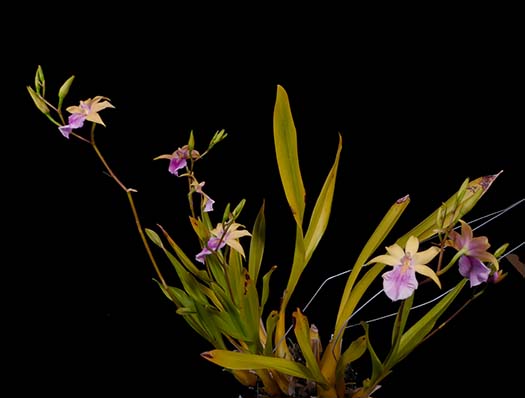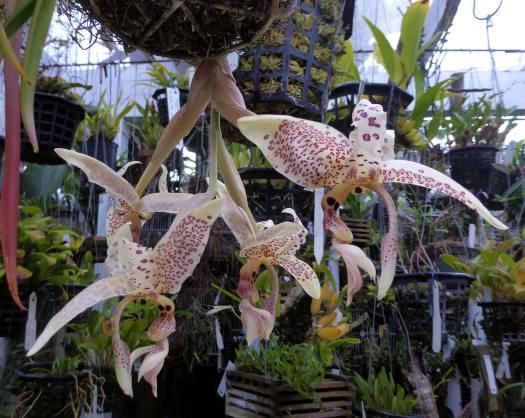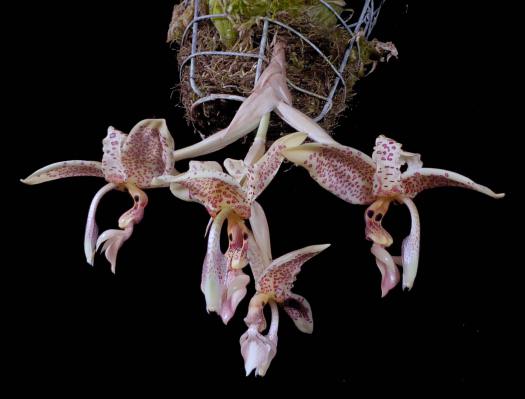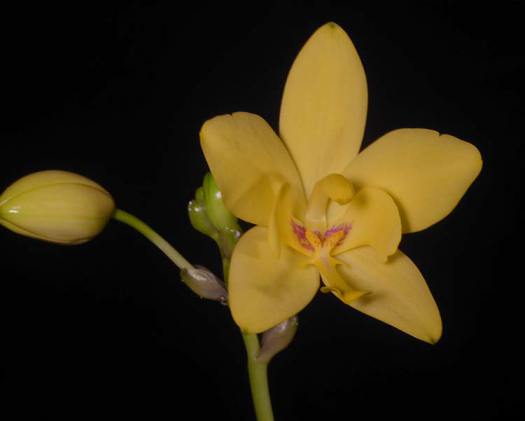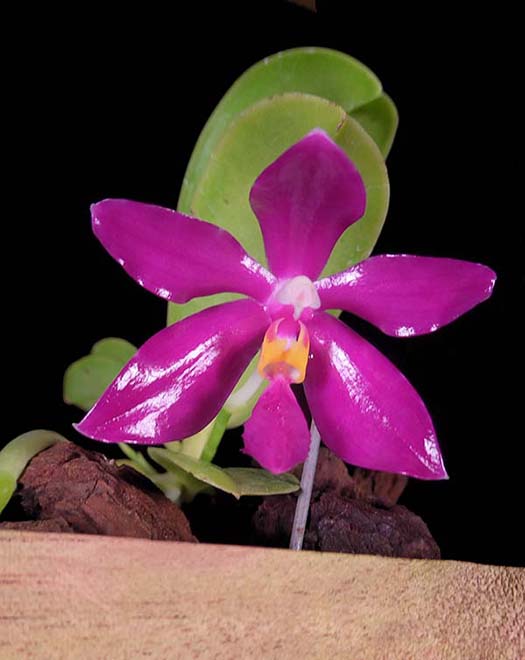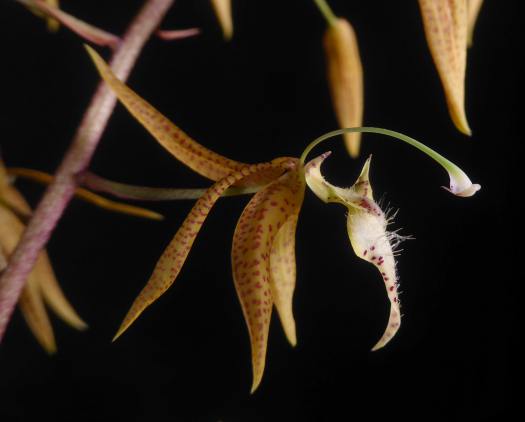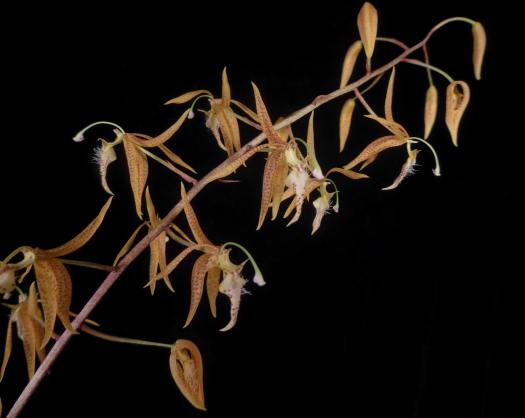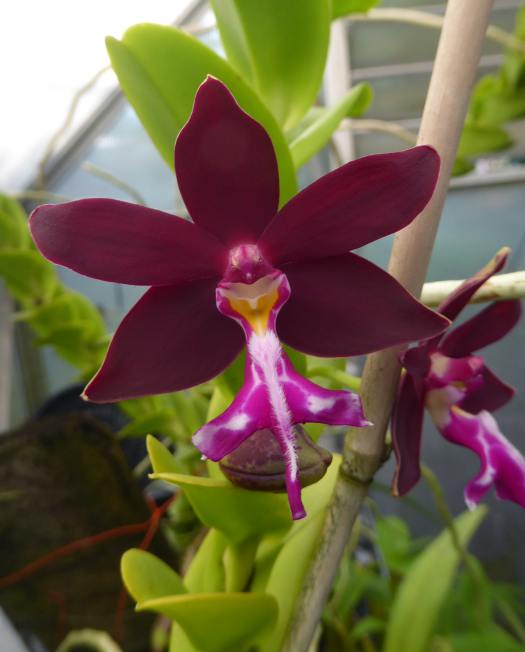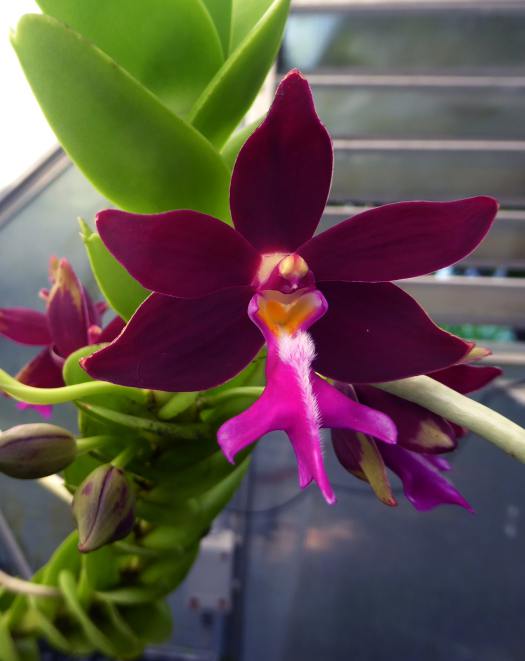October 2020
From Scott McGregor:
|
|
Bulbophyllum tingabarinumThis little guy blooms a couple times per year for me-- an easy outdoor mini. |
Cattleya dayana var. majorPretty flower, but slightly toasted from the 112F heat this month |
Dendrobium caliculimentum
|
Epidendrum medusaeThe flowers are borne at the end of fleshy canes—gotta love that lip… |
Miltonia regnelliiMy overgrown Miltonia regnellii is coming into bloom— repotting procrastination! I really like this species as it is an easy outdoor grower and has lots of 3” long-lasting flowers. |
|
Miltonia Totem Lake 'Gold Fever'Not a species, but maybe interesting to compare with its parent, M. regnellii. It very clearly kept the lip from M. regnelii. One of the few Miltonia hybrids worth growing (IMHO). Also compare with Milt. regnellii auriea in Roberta's section |
Maxillaria dilloniiI like this Maxillaria—it stays compact (been in the same 7” pot for a decade), is an easy outdoor grower, has reasonably large flowers for the genus, and blooms multiple times per year. |
Sobralia fimbriataIt is a good day when you have three flowers open on this one-day wonder! Extra fringy flowers and arguably the best scent of any orchid (jasmine/spice). Most Sobralias are giant—this one is only a little over a foot tall and sees to grow well outdoors here. Rarely seen species, deserving of more attention. |
|
Oerstedella (Epidendrum) schweinfurthianumI love this species—it grows into a bush about 5’ high, blooms from the end of August through mid-December, and has intensely saturated and oddly contrasting magenta and orange flowers. I grow it in full sun (Southwest exposure) and probably should prune/train it better to contain the sprawl. Some leaves got toasted a bit the day it hit 112F here, but the buds are now opening and it seems happy enough.
|
|
From Roberta Fox:
|
|
Outside in the Back Yard: |
|
Barkeria lindleyana ssp. vannerianaThe moun totally disintegrated more than a year ago, and I just slid it out. I put a zip tie through the root ball so that i could hang it. The plant has prospered. New roots are growing around the mass of old ones as well as into the air. Barkerias need to grow mounted (or unmounted) or in a basket with no medium, and dry completely between waterings. Also, I never cut old spikes until the following year when the truly dead part is crisp and breaks easily. IF you cut, you will probably end up cutting live stems. Also, after blooming they lose leaves - those old stems are the plant's reserves for the following year's new growth, much like a reed-stem Epidendrum. |
|
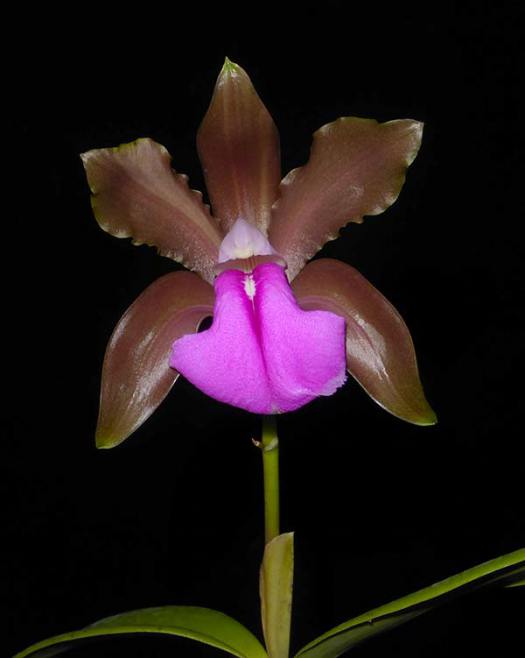
Cattleya bicolor var. braziliensisI showed another color form of C. bicolor last month. This one has lighter petals, with a very large, brilliant lip. |
|
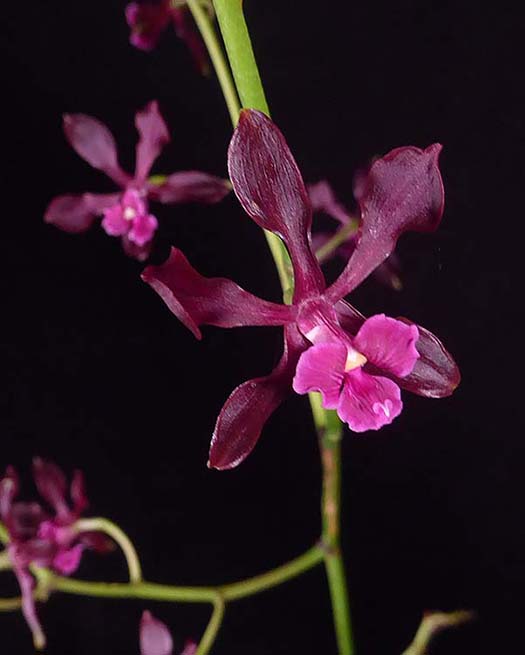
Encyclia atrorubensSpike is about 40 inches. |
|
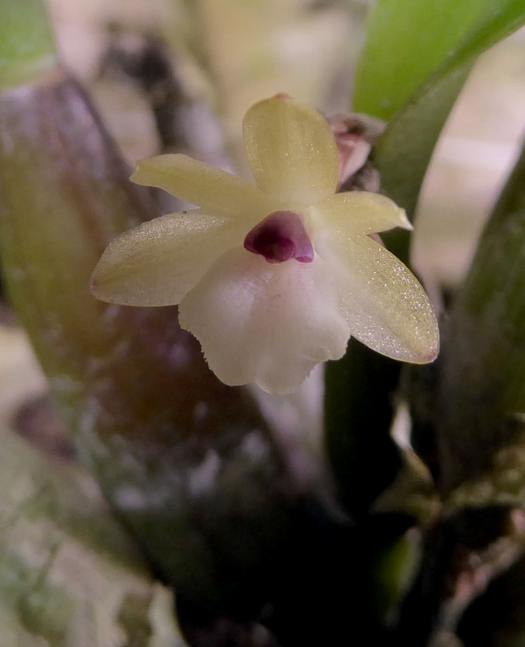
Scaphyglottis minutifloraFlowers are a bit over 1/4 inch, but there are lots of them. |
|
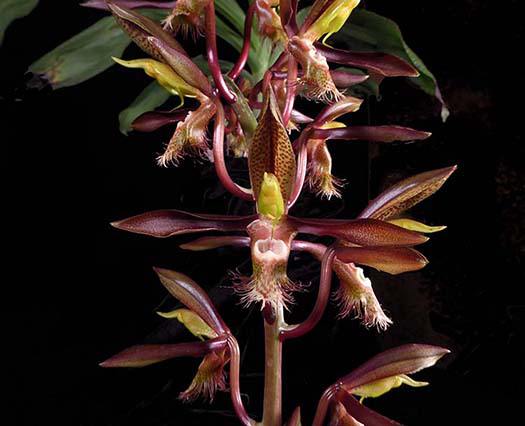 Catasetum saccolabiumI put this under "outdoor growing" since it spends about 2/3 of the year outside. When the nights get down into the low 50's F. I move the Catasetinae into the greenhouse. While dormant and leafless they don't take up much room or need any attention- they could easily live in the house. Then, in spring as soon as the nights get above 55 deg F or so (March or easly April) they are in full growth, and benefit from the light and fresh air outside - and there is room for the large leaves. |
|
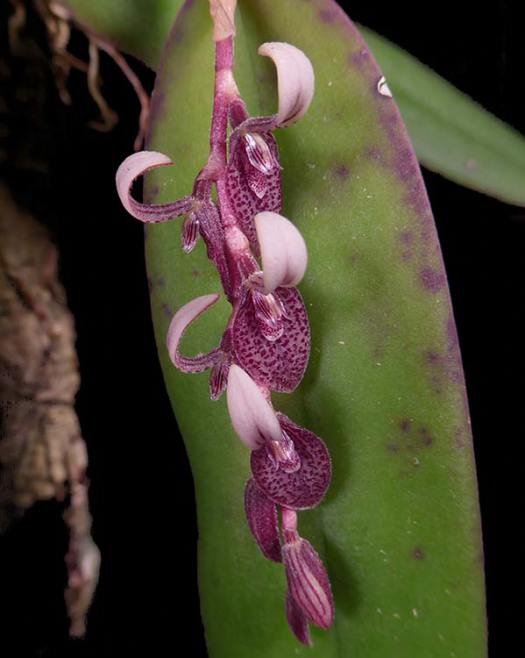 |
|
Pleurothallis strupifoliaI have been nurturing this plant for about 4 years, this is the first bloom for me. It would tease me with empty sheaths. Finally, success with a chain of interesting flowers. |
|
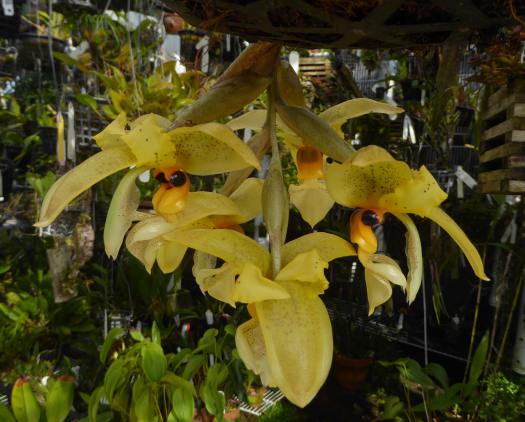
Stanhopea wardiiThis inflorescence popped open as I was watching it. The perfume is powerful. |
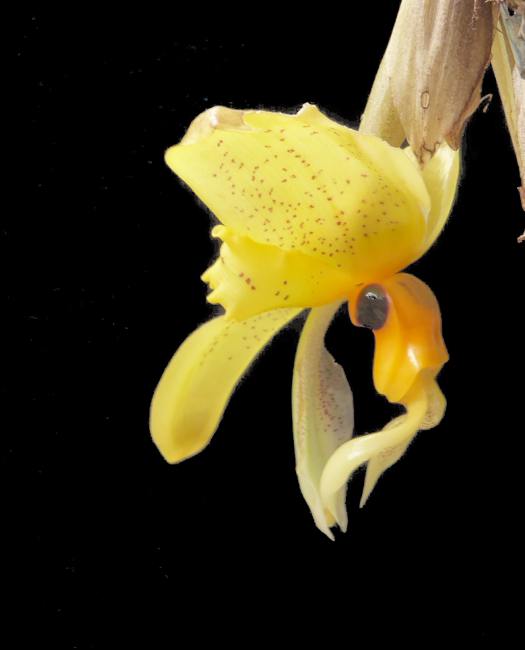 |
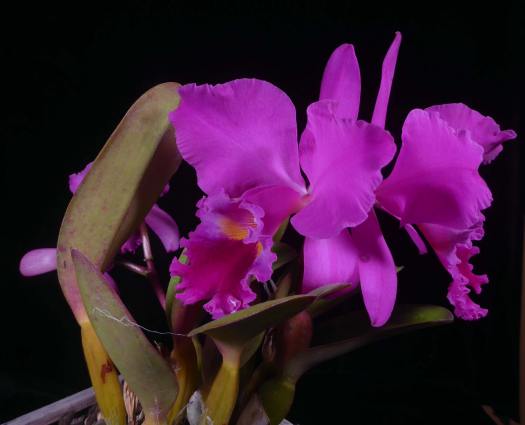 Cattleya labiata f. rubraThis species gets just a bit of overhead protection. It tolerates coold winter nights quite well. |
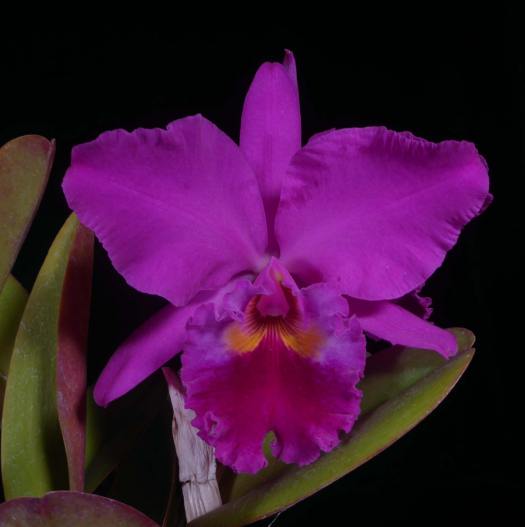 |
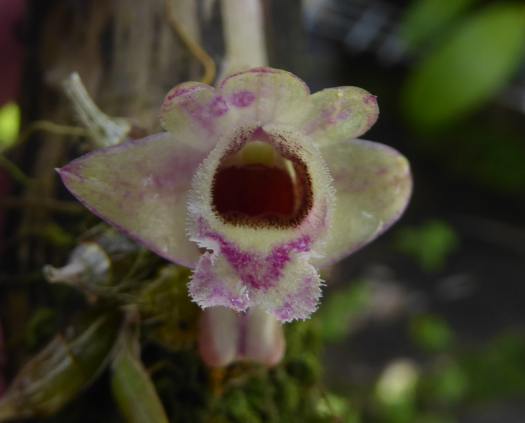 Dendrobium hekouenseFlower is about 3/4 inch (my hand for scale). It about the same size as the plant. |
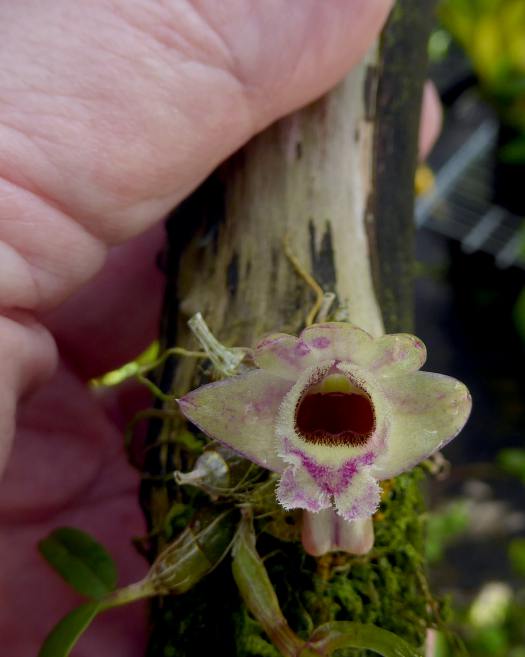 |
Vanda roeblingianaI do love cold-tolerant Vanda species. The flowers are almost glossy, with an intriguing bilobed fringed lip. |
|
Miltonia moreliana 'Candela's Delight' AM/AOSThis cutlivar has particular good form, and big flowers (lip is nearly 2 inches across) It was Milt. spectabilis var. moreliana, but now is considered a separate species. |
|
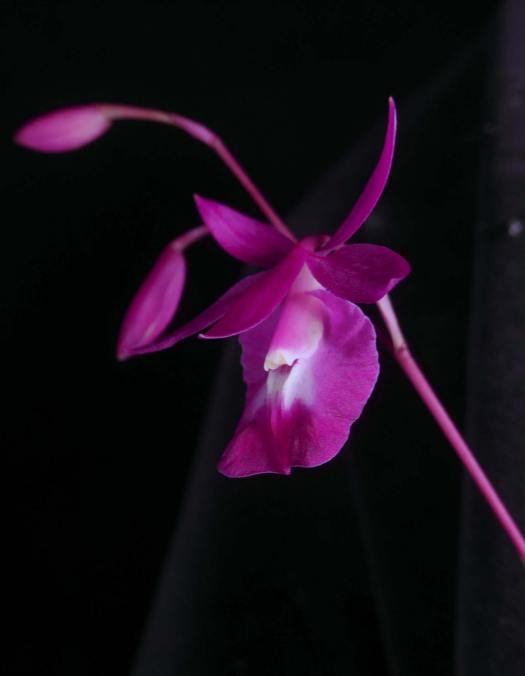 |
|
Ceratostylis retisquama (rubra)This species has a reputation for being a warm grower, but I was assured by the seller that it was cold-tolerant. I got it in January, so it hasn't been through a full winter, but it did see many chilly nights, and seems to have had no harm. It produces these orange flowers on and off thorugh much of the year. |
Barkeria scandensSee the culture notees for Bark. lindleyana. I got this plant as a bare-root keiki, which rapidly attached itself to its mount. |
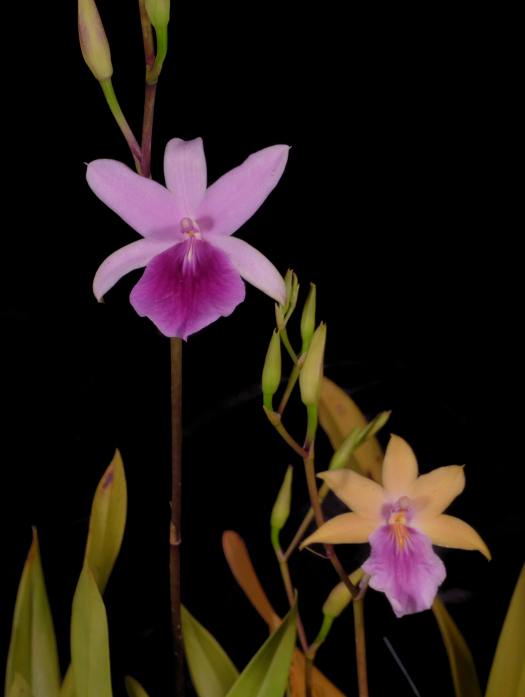
Miltonia regnelliiHere is a size comparison of the typical and aurea forms. |
|
Stanhopea occulataIt is thrilling to watch the buds develop, and then one morning wake to fragrant open flowers. |
|
In the greenhouse... |
|
Polycycnis musciferaThe flower, with its subtly fuzzy lip, is best appreciated in a photograph. This species may be "promoted" to outdoor growing... its range of elevations in Central and South America indicates that it should do fine outside. Not wanting to experiment on this one, I acquired another, which I am growing outside. If it makes it through the winter and blooms for me, this one will move outside too. |
|
Trichoglottis atropurpurea (brachiata var. philippinensis)Two plants with slightly different flowers. It has aerial roots over the length of the plant. It branches readily, and can become rather large. It propagates easily from cuttings. To start one, it can be tied to a stake or hapu'u pole with some of the roots in a pot with bark. Once it establishes, the part in the pot will likely eventually die, but by that time it will be growing well in the air. High humidity (like in a greenhouse) is vital. Along with saturated color, these are also quite fragrant. |
|
